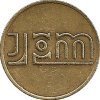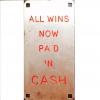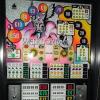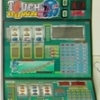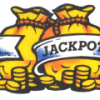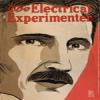Leaderboard
-
[[Template core/front/popular/memberRow is throwing an error. This theme may be out of date. Run the support tool in the AdminCP to restore the default theme.]]
[[Template core/front/popular/memberRow is throwing an error. This theme may be out of date. Run the support tool in the AdminCP to restore the default theme.]]
[[Template core/front/popular/memberRow is throwing an error. This theme may be out of date. Run the support tool in the AdminCP to restore the default theme.]]
[[Template core/front/popular/memberRow is throwing an error. This theme may be out of date. Run the support tool in the AdminCP to restore the default theme.]]
Popular Content
Showing content with the highest reputation on 10/07/21 in all areas
-
And there's more..... Electro Mechanical (EM) - Versus - Stepper Reel Unit (SRU) As already mentioned I had succeeded in filling a vacancy in JPM's After Sales Service and had a shiny Blue Ford Cortina estate. It was one of the only estates that would get a machine in the back with the seats down, sort of guaranteed to kill you if you were rear ended but I digress. (another welshman). Work days were now in a 3 piece suit as we were ‘an extension of Sales’ as Ernie Beaver, the sales director at JPM let us know on frequent occasions. This was a new venture for me and involved, amongst other duties, taking calls from technicians in field who were stuck with a problem and couldn’t fix the machine and those were the calls we enjoyed taking! It was always a pleasure to speak with a like minded engineer who wanted to fix a problem and needed another pair of hands to assist so to speak. We would pore over the schematic in the office asking the engineer to try various things and offering our suggestions until we eventually nailed the issue! Believe me the last thing we wanted was to have an engineer left in the field with a machine that was still OOO as we called it and no idea of how to fix it. In fact several of us had been know to jump in the car after work and drive to site to be there for the next day and check out the problem ourselves if the answer was not found. This was especially true in the case of a new machine just in case it was a production issue which would be replicated. We sometimes took calls from executives of influential Companies pointing out the shortcomings of a design or a flaw in the product and demanding that we come and ‘sort things out’. Both these types of calls resulted in us often taking a two pronged approach, perhaps going to site to see the issues first hand as a PR effort, but also checking on the production facility and seeing if we could see the problem first hand and persuade Dev or production to change things. We were expected to man exhibitions stands as well in such places as Alexandra Palace, back in the day before it burnt down, Olympia and also the NEC. That last venue based near Birmingham was used only once and was the stage setting for the culmination of an important (head banging) period in JPM’s history and proved to be a turning point. More of that later Lets just step back over 40 years here Everything is no longer in black and white but it’s still sepia coloured. It’s early evening, it’s raining, and a machine is out of order. The call was made earlier in the day and the engineer turns up. First thing he does is light a fag and ask the landlord about the nature of the problem and checks out the machine. Let’s not forget before we go any further, there is no test routine per se! So, drag the machine away from the wall, create a space around the back to try and get some working space, open the beer sticky back door to the tobacco stained inside, perhaps kneel in the beer soaked carpet and wait for the usual comments from the crowd. “Ooo it’s like a telly in there,” “look at all those wires,” “can you make it win for me,” “come to stop it paying out have you?” And dozens of other well know comments He’s heard them all a hundred times If it’s payout related it’s easy, get some credit, move the reels to a payout position, hold them, hit start, wait for the game to finish, payout should happen, simples. More game related issues? He played until it came up. But then of course there was a schematic supplied with every machine and furthermore most canny engineers had a folder with the latest schematics in. By looking at the schematic, cycling the machine and following what should happen the engineer could trace the circuit and find the faulty component and here is the big difference between those days and today or at least when I finished in the industry and more’s the pity . He either went back to the car or delved in his tool box and pulled out a micro switch, a relay, perhaps even a timer motor. He might even look at the schematic and in the case of a relay related fault, check out if the contact was broken or pitted and perhaps search for another that didn’t utilise that contact or open the relay and even abrade the contact. Whatever it took. The point is in the vast majority of cases, unless there was vandalism, fire, or some other physical issue the engineer fixed the machine. He was proud of that fact, he was known for that trait. Of course with the introduction of the electronic systems many engineers, well in those days anyway, became worried. And rightly so, but their fears had to be allayed. I had already been, quite literally, "sent to Coventry" as the one person who was prepared to repair a new machine on site. The first breakdown of JPM's prototype electronic machine, the Each Way Nudge was in Thomas's Showboat Arcade in Coventry. I had a spare board with me obviously but I found that a transistor had blown and although I wasn’t prepared to actually de-solder the defective one, I scrunched it up with a pair of pliers and soldered the new one on to the legs of the old one. ‘JD’ as we say. (Job done) Lets not forget it wasn’t LSI in those days and there were many discrete components on the board. Crude?………Yes! Effective?….Definitely! Happy?……..Ecstatic! This first “repair” of the electronics in an Electronic machine on site was no small matter and was deemed as the crossing of a major hurdle for the company. I can already hear the snorts of derision here, and I don’t blame you guys, but try and figure that this was all new ground and there was a lot riding on this. In itself it proved unquestionably that the product ‘could’ actually be repaired by anyone (gee thanks), a fear that everyone had borne since the inception of the product. In practice of course (it has to be said) that the reality proved to be a lot different. The electronics system was without question more reliable. However with the delivery of the new machines and the inevitable issues with peripherals still cropping up, many of our customer's site engineers all over the country were desperately trying to fix broken bulbs etc, on this initial batch of machines by taking out (aka ripping out) the controller and ordering a replacement part in sheer terror of the unknown. This was because they had lost the traditional testing or ‘exercising’ methods that they had learnt over many years on the electro mechanical machinery. They did not read the manual, I mean what real man ever reads a manual! All of the calls to After Sales were recorded on a ‘Call Log’ and the vast majority that started the line with EWN (Each Way Nudge) had the immortal phrase RTFM written against them They didn’t know the machine could be exercised via a test routine. Engineers were far more used to robust systems and were playing havoc with the more delicate connectors, which with later hindsight admittedly were not up to the job. It became obvious to everyone that the industry would need to educate these guys, or this product and the very future of JPM and the massive investment already made would in turn fail. It goes without saying that the success of a product meant it was taking more money than any other machine and an old adage by Mick Foster of Associated Leisure was that a charity box took more money than a dead fruit machine. Due to the previously mentioned mind set it seemed that every fault was being blamed on the new technology and the product was getting bad press. JPM quickly came to realise that it was fear and ignorance as much as anything else that was fuelling the transplant epidemic which itself was introducing the aforementioned damage to connectors coupled with the huge number of circuit boards being returned with NFF but damaged connectors. So after devising a training programme with Charles Weeks and several other colleagues we went around all the ‘majors’ in the Industry pointing out how the product could best be serviced, exercised and how to fault find! Often this was on a shift by shift basis as Engineers would be on call out Rotas. My colleagues and I were tasked with travelling the length and breadth of Britain and eventually much of Europe, setting up training road shows in Hotels, Village halls, Cinemas in fact anywhere that could hold 20 or more engineers and a few machines for them to work on. I was promoted (?) to Training Officer and this constant exposure ensured that my face was well know throughout the industry. Due to my experiences I was eventually offered the job as After Sales Service Manager. Bob Old had left the role as my manager and moved over to open a new venture that JPM had entered into, supplying spares to the industry for our competitors products as well as our own. Bob Old eventually left JPM and went on to work in a Sales role for Aristocrat in London and then Australia and became truly successful in that role. So I inherited the Spare sales team as well He unfortunately passed away a few years ago. RIP Bob you taught me how to drink!7 points
-
Thanks again guys, the original 'JPM' still had several good years left. However there were some rocky rides along the way which us 'old school' guys had to face before the directors eventually sold up and capitalised, which they truly deserved after giving so many of us such a good living for so long. Expect some vitriol and phrases like "In the opinion of my peers" " and "In my personal opinion"5 points
-
Love the description of the electro engineer, That was me exactly.😁 Always been my sentiment.2 points
-
Hello well first of all let me start by saying I never realized how much interest there was in the product and the industries that I enjoyed as a younger man. As much as the industry was interesting and fun to be in, the company JPM, was something very special. Considering the company as we knew it ceased to exist many years ago, most of the individuals that enjoyed working together, and playing hard together, are still in contact with each other. Several people on this forum have suggested that stories about the early days might be interesting so I have decided to attempt to write some humorous lines about those days and the product. This is obviously from my point of view and so it's in a way autobiographical, but I started on the production line, went through to the test department, moved on to development, migrated to customer services promoted to customer service manager, was asked to take over development, was part of the Marketing team and then project managed the new SWP so I guess mine is a particularly wide view. If this seems self indulgent or self promoting it's not meant to be so be honest and re-direct me if I drift off subject. I still work, I enjoy working with a bunch of geeks, lunatics, and research amongst other things renewable energies, water purification and believe it or not mobile phones and beer brewing, however that's another subject altogether. Strangely, at least six of us used to work in the gaming industry, no one else from JPM, they are not that old 🤔 however several from Astra games which obviously I had a big hand in setting up. I'll gather some facts together and come back with more pertinent information. Regards Frank Bird .......... Continued ..........1 point
-
1 point
-
Brilliant Brilliant stuff Frank thanks for another enthralling chapter .1 point
-
I'm not great on 6809 assembly language unfortunately. If it was Z80 I'd stand more of a chance!1 point
-
What a fascinating thread. Must have been exciting to work somewhere on the up, unfortunately (though it was fun a lot of the time) my experience of the industry was the dying days, the fag end of PCP in the late nineties. We also used an estate car incredibly dangerously to transport single machines though, a Volvo which was the bosses ex motor.1 point
-
1 point
-
There was an article posted on here(by ron)a while back about that new parts department opening at JPM and iirc it mentioned Bob Old. Edit its on page 3 of this thread1 point
-
1 point
-
Neccessity is the mother of invention, I think that's how the saying goes? Well done Rich.1 point
-
Well well well ive managed something and it works lol I decided against removing what looked to be a riveted coil etc. And just decided to move everything from the old bases and piggyback the new relay on top lol Thanks everyone Happy days1 point
-
1 point
-
1 point
-
I would like to personally thank frank for sticking with the mecca and sharing his very interesting life with us all.. Looking forward to more stories from the birds beak We are indeed lucky to be able to share franks experience in the industry in such great detail and 1st hand.. Thanks again mr bird1 point
-
More..... As an aside to the product per se we had couple of issues to deal with that were not down to the design of the products themselves but were down to the industry we were in and products appeal to those less scrupulous characters One such issue that JPM experienced was the new products susceptibility to Static electricity and the result of that ‘attack’. We found quite early that the machine could give unexpected results to static but this was not just the gas lighter piezo cell that was being used by the public to upset the controller. Even walking across a carpet could cause an issue and this was being exacerbated by two fairly new concepts that just happened to occur at more or less the same time. With the advent of ‘banked wins’, punters ( I always hated that term) were allowed or encouraged to bank their wins. As a manufacturer JPM realised that this was a good thing as the resulting payout always seemed significant rather than the staccato clank of smaller wins, believe me a lot of people were persuaded to play when they heard that advert! Anyway, JPM had a major issue with static and it got to a head and was proving to be so troublesome that I was bundled off to an establishment called ERA Technology where we subjected the machine to a series of tests in an anechoic chamber. I don’t think the sound quality or lack of it in the room was anything to do with the tests it’s just that was the only room available at the time. It was a very strange environment in which to hear a machine payout! So we sat there for hours hitting the machine with static but nothing seemed to be getting past the earth bonds and when they did the level 3 interrupt(?) circuit performed as it was supposed to. Then suddenly the machine went haywire, pulsed out a coin and the test equipment registered a huge spike - from out of the blue. Scratching our heads we continued to play and then it happened again, but this time just as the machine was paying out, one clunk and reset and the test equipment showed a spike. As we discussed the subject of static over a coffee, as you do, the engineer from the establishment explained a little about static and how simply raising a coin from your pocket to the machine could induce static but not enough to cause any issues and in any case the new Mars mech was plastic and so it could not dissipate the charge. The answer struck me like a streak of ………. The coins were entering the coin guides and coin tube, unearthed, and then standing there like a great big capacitor ready to jump that gap between the payout slide and the casting of the payout mech when the charge was sufficient and believe me it was huge!. We tried earthing the tube with an insert and overcame the problem but then any of you that have had site experience will know that anything in the path of a coin WILL cause a coin jam, no matter how careful you are. So I took out the payout slide, inserted a rivet through the slide and filed it down, again after refitting and testing it sorted the issue, however this was not an answer. I contacted Coin Controls in Oldham and persuaded them to add a measure of graphite ( I think it was graphite ) to the plastic material before injection moulding, this gave it the conductivity of a peace of wood. After explaining what the problem was and negotiating for JPM to take the first consignment, we agreed to uniquely test it for three months before releasing it to the industry. That’s how we overcame that particular static problem first.1 point
-
Frank, Following your great read with interest with working just about right through that era myself. Can I ask you a question on the electro mechanicals and especially on JPM club machines.? Considering the already randomness of the electro game. What are your thoughts on the Jackpot control.? If the jp control timer switches were switched in the correct position they would keep the number two reel solenoid activated through the wipers and studs just enough make the jackpot symbol 'skip' past the win line.? As number two reel is crucial to a three way win left to right, right to left and indeed all four reels, this control did seem very dubious. I found this when trained at Bell Fruit where the same setup was used on all their club machines too. Although the variator was already in place to stop the reels from sequencing, I was never in favour of the jackpot control units as an added % control. Always seemed like cheating the player.1 point
-
Electro mechanical to Electronic machines 1978 ? ish As I recall, the initial ventures into the future with the new electronic JPM machines used the traditional reel unit mechanics. Obviously a much lower current than was traditionally used was sent through the static reels mechanism, after the reels had revolved and stopped, and in the case of a win position through the aligned wipers against the studs and shorting the appropriate contacts. This brought about new issues due to the low power required, variable resistance due to dust, dirt, scratches etc, and other problems due to the sensitivity of the control circuits and the soon to be antiquated mechanical nature of the reel unit. To keep the wipers held firm against the studs meant that the motor needed to be held on while the sensing pulse was sent, but any aberration of the drive shaft meant that the wipers would continue moving slightly and the contact would be less than optimum. If I remember we called it ‘breathing’, the reels would literally move up and down and seem to separate from each other! A few machines were constructed in this way and tested in Arcades in local seaside resorts such as Barry Island and Porthcawl but they proved to be unreliable to say the least and demanded regular call outs and attention and the system was deemed troublesome. One (older) guy working with us, Charles Weekes (who became my mentor and a friend friend) was an old school technician who could regularly be seen scratching his wrinkled forehead with his foul smelling, smoke belching briar pipe. Charles Weekes (RIP) had worked on Juke box’s, old Bally, Jennings and latterly ACE machines, having run his own operating company in Caerphilly. Not only that but he had during his National Service days worked on very large scale flight simulators or more correctly as I recall, bomb and anti aircraft training simulators for Lancaster or Wellington bombers. I know not which aircraft and I suppose it could have been neither of them but that’s not really the point, they were large scale electro mechanical projects which demanded regular calibration.. It was Charles that explained to me that a ‘bug’ in the system, well at least back in the day, was in fact exactly what it was. An earwig, moth or similar insect, which had crawled into an open relay or a rotary timer had either shorted out two points or stopped a current or signal from being transmitted from one point to another so you had to find the ‘bug’. Charles one day, completely out of the blue, suggested that we should be looking at using stepper motors to send the reels to a random position then recognise that position by reading a code from the edge of the reel, a grey scale or grey code I believe it was called. He also mentioned to me in a conversation over coffee, that this was a proven technology and normal practice on military tank turrets and rotating gun emplacements but I have no way of proving this was the case. By this time I had moved to After Sales Service and was busy in the field and on the phone but as I was a product of the development department I was always welcomed in to help and give field input or just take a coffee and a Marlboro. He also mentioned to me over coffee and a game of Backgammon, he always won, that this was a proven technology and was normal practice on military tank turrets and rotating gun emplacements but I have no way of proving this. Of course the big problem was the gigantic leap to reverse typical current thought processes. Consider the following.. Randomness in an electro mechanical gaming machine had hitherto always been brought about by the various lengths of time that the reels span and then stopped. This in turn was governed by the control motor run time, but this was also interrupted by a, at least on JPM machines, a ‘random’ timer thus allowing the reels to spin for a random period each game That tried and tested method was about to be turned on its head by sending a reel to a position ‘that was already determined’ by the on board computer. Although the grey scale method was tried and proved to be effective it became obvious that the drive system itself was proving to be pretty reliable. Indeed the precise fixing of the grey scale could prove itself to be problematic given production conditions and personnel, so it never got past the initial prototype and research stages but it was exercised as an idea. Reality was that the drive was so effective, the software only had to check the reels once in a revolution to confirm that it was where it should have been to be reassured that all was ok, or stop and alarm if it was not! Despite all this the first actual ‘game’ implementation proved to be problematic, but I’ll come to that later A great deal of thought and effort went into the process and all the while the realisation that JPM would have to gain the Gaming Board of Great Britain’s approval for such a system. And so the Project began it’s long and tortuous journey. The initial conversations were conducted and the agreement was to go ahead in principal and develop a prototype to conduct a presentation. In reality JPM had already begun scratching the surface of the design and development and had enlisted the help of Texas Instruments. Charles and the dev team had put together the prototype and enlisted the help of a company called Starpoint to build the plastic assembly that would hold the stepper reel in place and allow the free movement of the reel. Starpoint were already in the Industry and had supplied various high quality, precision made plastic parts so they were a natural choice and apart from that, the Directors knew each other and already played golf. Although initially it was a single stand alone unit fixed to a base, it was soon developed as a modular unit that could be clipped together in banks of three or four. In order to prove to the Gaming Board of GB that the system was infallible JPM had to run the system for, as I recall, 250,000 games. As each game ended, and with the use of a super 8 cine camera set on single shot, the result of each single game was recorded. However this would be of no use at all if we did not know what the computer had decided which position the reel ‘should’ have been sent to. So as a confirmation we had a 7 segment LED panel mounted by the side of the reel and this recorded the game number as 12,350 12351 12353 etc which was duly recorded on the single shot. Combined with that a dot matrix printer recorded on fanfold paper, and in a very fine font, the result of the games i.e GAME 12350 Org#1, Lem#3, Bel#1 etc for every one of the 250,000 games. That (#) number against the fruit symbol was as a result of their being more than one of that particular symbol on the reel, and it was necessary to prove that the system had selected the correct one. After being asked to be part of this process, seconded as it were from After Sales, I was asked to check at least 1,000 lines of these results at random from each page of paper. Oh the Joy! This included rolling the cine film to the numbered position to check the result at which point I placed a small tick against the checked result on paper. There were no mistakes. The gaming board were once again invited to the factory where they were asked to look over the result and if they wished they could check for themselves that all was in order. They did actually check the results for themselves and I sat with them for that whole day going over the prints and the video shots and instructing the machine to go to a chosen win line which we did several hundred times. Starpoint did a brilliant design job of the Reel Unit and the product was released with the first machine being the “Each Way Nudge”. Previously, electro mechanical machines had used the principle of Nudge or shifting a reel one position forward. Due to the mechanical complexities it was fraught with problems and proved practically impossible when trying to move a reel backwards. This brought it’s own difficulty with the first game as I mentioned earlier, you see during the ‘dev test’ of the game software, the machine kept getting out of step and we could not figure out why as it had never happened in any of the extensive tests before the ‘game’ software was introduced. It was only when we realised that the break of the optic beam by the registration tab on the reel was made by the tab going forward OR backwards and that the tab was ‘x’mm long, that we understood the problem. As the machine was the Each way nudge, occasionally the tab would break the opto beam as intended, but in the reverse direction. Realisation was that the software had to look for the leading edge of the beam being broken on forward rotation and the trailing edge on reverse, the problem was solved. There were problems introduced when differing suppliers of reel bands supplied alternate thickness of reel bands, adding to the inertia of the reel and overcoming the ramp timing which could cause problems, but tighter specifications overcame that as well. Due to the stepper motor implementation any reel could move in any direction which opened up a whole new world of game possibilities and of course any one of a number of fruit symbols on a reel could be used when the ‘game engine’ decided on a result. Normally there were 20 symbols so if 4 of these were lemons the chance of a lemon coming up for any on reel (given decent randomness) was 4 in 20, (1 in 5) or 20%. Thanks to the design it was irrelevant how many symbols were on the reel as the game was run and the reel was told exactly where to go, or to be more exact, which symbol to go to, so there could now be 20 completely different symbols on the reel as the percentage no longer relied on the actual number of the symbol on the reel. Of course for cosmetic reasons and because of the nudge, there had to be more than 1 of each symbol but the ‘reel’ in the software could be 100 symbols long. This new method became known as the “virtual reel and as it was buried in the software department I know very little more than that. As I still worked enthusiastically and closely with the Dev team, my exposure to and knowledge of the product was growing in contrast to my colleagues in After Sales. This placed me in a good position for the next step up the JPM ladder. As an aside, the ‘nudge’ feature was actually patented by the Dransfield Novelty company, a facility that I visited and was welcomed to quite often. This no doubt provided the company with significant income as every machine with the nudge facility had to pay them. This is quoted from the Dransfield web site… "The nudge feature, which is still an integral part of most modern gaming machines was developed and patented by Dransfields many years ago and demonstrates its long established pedigree within the industry."1 point
-
Another nice original example, still on old coins and 5p tokens... https://www.ebay.co.uk/itm/284456581506?hash=item423aeef982:g:6iAAAOSwE2FhRbxl1 point
-
Can I just say again that these notes are taken from my perspective so I am bound to figure large in them. If this seems self indulgent or self promoting it's not meant to be so be honest, re-direct me if I drift off subject. The appeal of Development and creating new ideas and (truth is) actually being “recognised” for my abilities was beginning to appeal to me. It was here where I learnt how to create, wire and programme the analogue computer (for that was what it was) from the schematics prepared by Alan and Howard Parker. I never knew what a schematic was and the consideration that it bore no resemblance to the actual physical layout took a while to get my head around. As by way of explanation consider the London underground schematic is not geographical and gives no idea of the distance between two points! Constructing them as we did with a hole cutter, a plastic tray, a rivet gun, a soldering Iron and several rows of SAIA or Starpoint (more of them later) rotary switch timers, dozens of Omron relays and yards and yards of tri coloured wire. Bad Boys Race Our Young Girls But Violet Generally Wins Oh my lord where did that come from…. Black, Brown, Red, Orange, Yellow, Green Blue,Violet,Grey, White Isn’t memory a strange thing, I can forget anniversaries but that came from no where? Anyway, I digress (sounds Welsh?) Working for the first time with Alan and Howard and Ron (Watts) I learned how the machine was wired and constructed. I was also introduced into the world of ‘programming’ as indeed that was what it was, sequencing the operation of the timers and cams so that the various components operated in time during the game cycle. As a simple example the reel motor had to start momentarily before the reel stop solenoids were lifted or the reels would not start quickly and together. Oooh if I remember it was 10 degrees before, now where did that come from! All these little ‘sub routines’ would be recognised for what they were many years later with the introduction of the computer programme, perhaps it was around even then I don’t know. Furthermore I was also exposed to statistics, probability, chance, randomness and game structure and I eagerly started to read about them and found them fascinating. Although basic calculations could be worked out and a free running machine could be constructed to record the wins on meters without a player, believe it or not, the only way a machine was percentage tested was by sitting there with a black coffee (Nescafe) and a fag (Marlboro). Playing the machine over and over again and trying to get maximum return from the benefits offered via holds and features was second nature after a while, all the time recording on sheets of A4 paper the result of each game and what you had done to influence it with hold or hold after win etc. Example…. 6421 Gr | Gr | Or |.......|......|.......| 6422 Gr | Gr | Gr | H1 | H2 |.......| 20p | H 6423 Gr | Gr | Gr | H1 | H2 | H3 | 40p | HAW And so on. By the way I guess the payout amount is wrong but you get the idea hopefully, and the big number? That is the game number and until you got to around 5-6 thousand the results, apparently, were not very revealing unless they were really crazy by which time you knew there was something wrong with the design. With a 3 reel machine and 20 symbols per reel the full game cycle was 8000 games and until that number was achieved we sat there and played - and played. This was the boring bit but it helped that I had a colleague to share banter with and Charles Hazel or Bingham, was that man. One episode that was amusing was brought about while checking the percentage of a machine and realising that I had not recognised a 'Grape' win, or three grapes appearing in the win line. This was about 40p or some small amount and this appeared to be bringing the percentage payout down and certainly should have appeared more often than it had appeared to have done. I checked the spec and the glass and and there was the win symbol but looking at the third reel there were no grapes and the wiring had not accommodated the win either. It had been missed out of the design. I wont mention the guys name but he did go red from embarrassment! I mean 'what' are the chances eh? I found that I was really happy in the development arena. I began to notice that the later endeavours from the research area incorporated electronics, micro processors and plug in circuit boards some of which could be seen in the ‘extra secret’ development area. Plug in sub boards could be seen on a back plane and discrete components such as transistors and capacitors could also be recognised none of which I knew of at the time. So I decided it was time to get some serious studying done and I enrolled in Llandaff technical college for a course in Micro Processor Controllers and Electronic Circuitry and turned up in my Vauxhall viva HA ( to give a time reference). I was not alone as several of my colleagues decided that this was the way to go so we used to got to college and this was an excuse for another night out! Working with industrial research and development teams and being exposed to ‘cutting edge’ technology of it’s time meant that much of the stuff we were exposed to was ahead of the college’s mediocre supplies. I began taking orders and quite often delivered components, circuits and odd parts in to donate to the tutors which they were grateful for and helped me to become friendly with the tutors. All this was sanctioned by the company as it gave us an ‘in’ to the University. As an aside here it was during this period of development that we were working closely with Texas Instruments and as we were about to take a great deal of their products, particularly the TI 9980. This was to be the heart of the new system I was told. Anyway, one of their consultants came to work alongside us to help with the interface. The guys name was Peter Crow. I can remember some years later the hilarity caused as a receptionist in a hotel took down the names of myself and my colleagues. Martyn Stork, Frank Bird, Peter Crow and Ian Wingfield when we all booked into a hotel for the night. Cheeky girl laughed and her name was Abigail. Part of the development of the Electronic system for JPM was the adoption of a cutting edge drive for the reel unit, those spinning wheels that display the recognised symbols such as Oranges Grapes and Lemons etc. Again as an aside here, many people are unaware that the symbols or Icons of fruits, are actually supposed to be a hangover from the early days of coin operated machine in the US. Or at least this is what I have heard from many people both in this country and the states and it is the subject of much conjecture. Most people (well those not on this forum anyway) probably don't know where the term ‘fruit machine’ came from. The modern day ‘fruit machine’ is actually supposed to be a result of several American companies around at that time one of which was called Bell and they produced chewing gum, or so the story goes. They developed a machine along with the Mills company (again so the story goes) that dispensed the ‘Bell’ fruit flavoured chewing gum and sold them in early coin operated machines that used the reels as a gimmick. The game would play and the customer would get delivered a fruit flavoured gum! The ‘Bar’ symbol is again, supposed to be, a representation of a stick of chewing gum and the Bell symbol, well that goes without saying. Of course the typical bar owner would always have a little ‘book’ on the side and you could give the guy a dollar or two and bet him that you would win your stick of gum. If you did he would give you back a prize whose value was based on an arbitrary amount depending on the fruits that came up or perhaps the Bell or the Bar symbol would have been the top prize and gave perhaps 10 to 1 on your stake. Of course the odds were heavily in favour of the Bar (for Bar read Mob, of course). In any case enough of ancient history, the next step (sic) is into the future with the Stepper Reel unit!1 point
-
Apologies.. Been a strange couple of years hasn't it? I have some more to add ( at last ) for anyone interested - let me catch up what I have done before.1 point
-
sort of related as mentions sega i want to hear the old jpm workforce stories1 point
-
1 point
-
1 point
-
One of JPMs electro panels manufactured in the 70s. After years of use and dirt, Restored,cleaned up well and still looks and runs much like the way it was built.1 point
-
Hey guys let's not forget there were many more pubs than arcades in those days and in truth arcades didn't necessarily have the latest product. At that time we had to change products every 6 to 8 weeks and these filtered down to secondary sites etc.1 point
-
1 point
-
Once again forgive me, these are personal observations so I’m bound to figure in them. Ok, so early to mid 1970’s. Flairs were the in thing, that and turtle neck sweaters, bright flowered shirts and JPM were reinforcing their early beginnings. We seemed to have found a recipe for machine development that combined decent technical detail and popular game play. Most of this was the brain child of Alan Parker, Howard Parker and Ron Watts the latter being the one that combined the ideas of the others into great artwork design. At this time I had moved from reel build and test onto the Control Board test and from there a step, literally a step, through a newly opened break in the wall and onto the final machine test area. In reality this was taken quite soon after I had begun my employment with JPM and I was one of only a few individuals to have worked full time in all the areas within the JPM test area although others had obviously done similar with other smaller companies. Alongside the production staff’s motley collection of vehicles, the car park was beginning to be populated by vehicles that displayed, quite rightly, the recent success of the company. BMW 5 series, Rover P6 3.5, Aston Martin ( ok second hand ) and Mercedes. Visitors regularly turned up in equally high class vehicles and it was not unusual to see the odd Rolls or Bentley parked out front as the larger than life operators and distributors, sometimes with their secretary's ( nudge nudge ) came to look around. Let me necessarily outline at this point a little about the culture at JPM. It was a Team. That is no hyperbole or unrealistic exaggeration. That phrase has been hi-jacked over the years by wannabe’s with no real substance behind their claims, but it was used as a slogan in the JPM Marketing Strategy ( photo to follow ) and quite honestly, it was the truth. There was just not an us and them. The directors had a job to do as much as we all did but they often joined in with conversations at the factory door or came to have a chat and ask how things were and if anything could be improved, and they quite often were as a result. They also bought Fish and chips ( no Domino’s in those days ) when there was a need to work late, sometimes all nighters, and it was far more that just ‘trying to stay with the boys’. One of the biggest factual statements of the team culture was the payment structure. As memory serves we were on about £30(ish) a week, now that wasn’t a lot of money and certainly less than I had been earning as a time served Joiner and latterly a Ceramic tiler, but I had to give it all up due to an injury which is why I took this temporary job in a factory! (Nothing as permanent as temporary eh) If you worked a flat 40 hours then no bonus was payable ( as I remember ) needless to say I never found out and when the shout of “Bonus is up” was shouted out, the top wage earner on the huge paper chart pinned to the wall was either Gary G, Gary P, or me or one of very few others. I have recollections of monthly pay slips boosted by over £1,000 but 70-80 hour weeks were not unusual, and you were never, never ever, late. I also have vague recollections of going over to the Plymouth Arms on bonus day, but I don’t remember going home. That is not to say that this was a constant, I remember vaguely being asked to go the cabinet shop which had a large open area that was usually filled with cabinets but on this day was ominously empty. As we all circled Jack Jones he explained about the huge downturn in business and that he had to lay off 30% of the production staff, turning around he apologised individually as he picked every third person, I did the maths and the head count pretty quickly and stayed exactly where I was but filled with fear at the possibility of being laid off for the first time in my life. A few months later most of those staff that were laid off were back anyway. However it was just a little time later when a position was advertised internally for the development department and although I had not long been married and taken on quite a mortgage, the idea of a constant flat salary, but admittedly at a considerably lower wage, appealed to me after all I could still earn a few quid on the weekend tiling if I needed to! And so it was that I left the production area and climbed the stairs ( and not just metaphorically ) to claim my bench in the development area and join a bunch of new colleagues and disciplines. L These were the TEAM ( printed on the back) give away T shirts - one was in each Cash box for a period L -> R Rob Higgins, Me, Ernie Beaver, Rob Old, Howard Parker, Huw Thomas1 point
-
Ron Watts was the design guru behind a great deal of JPM's products and success. I was always happy to work with Ron as he was open with guidance and assistance, but as well as the work aspect he was a solid guy to know. More to come in my recollections!1 point
-
1 point
-
Continuing my recollections ( stop me if I'm boring you ) The Ace building in Ferry Road was a fairly dilapidated old warehouse unit that had cracked brickwork but was nicely white painted with of course a large JPM sign. A huge concrete ceiling some 20 foot high in the main assembly area and no insulation to the walls in those days ensured that in the winter it was freezing. Offices and development were on the first floor accessible by a concrete stair case or for the prototype machines, a hoist and a steel floor with chains, no cage, HSE what's that?. The stores and the cabinet shop were across a large potholed access road that went no where except to the weed covered red brick wall that was the boundary of the Gas Board wall and the huge gasometers that supplied some parts of Cardiff and dwarfed the factory. Stacked on shelves behind the 6 assembly workers were the parts to be fitted to the cabinets and in front of them scraps of domestic carpeting were a protection from the cold floor in front of the assembly runners. Empty machines were brought in on sack trucks and set on plywood bases to be pushed down the floor level roller line. Graham, Tommy, Howard, Gareth B, Gareth G, Gary (common name in Wales yew see, init,) used pneumatic drills, screw drivers and nut runners to install the components necessary for the build and they all raced with their guns screaming to see who could finish their machine first. From the end of the line machines were again sack trucked into the test compound which was delineated by a low stud wall topped with a green plastic coated chicken wire, this to make sure that no one could get in unless they were trained as the earthing was protected, the machine having to be earth tested separately. My first job was to build (reel units) flashers which I found both daunting and interesting if a little repetitive but soon, chasing my own build count made me want to better the build environment. Given a colleague to work with we finished our efforts quite early in the week so rather than pass them on to the Flasher Test area, I offered to learn and was introduced to the Schematics and so we combined the build and test which just made common sense to me. Finding work to do was easy as we were getting more and more successful by the week and demarcation lines were thin. One of the tasks we could help with was producing the Schematics from the master copies. To make the large scale AO circuit diagrams or schematics that made up the only diagnostic guide sent with the machine we had a master that was made by Howard Parker drawn full scale on a transparent plastic like material. This was then placed on a special sheet of ‘blue print’ or photo sensitive paper and both were put into the rollers of a diazotype printing machine. This machine used neat ammonia as part of the 'developing' medium and the paper being photo sensitive bleached with the blinding light produced, but only where the master was blank. When blueprint paper is exposed to uv light through the machine a positive image is "burned" onto the blueprint paper from the original. After this occurs, the paper is then exposed to ammonia gas which fixes the lines or the print which turn blue. The problem was that the Ammonia had to be fresh and transferring it form a bottle to the machine ended in the room filling with ammonia fumes, the process itself producing even more fumes. Again HSE? I seemed to understand the schematics quite readily so I was keen to learn how to test the rest of the machine and started hanging around the test area where the relay covered control units with their various rotary control timers were being tested or perhaps exercised is a more fitting description. This was done on huge test rigs covered in lamps and switches which were in reality simply a machine without the cabinet. Helping with this, and testing the reel units introduced me of course to the concept of fault finding using the schematics which stood me in good stead as time went by. Regards, Frank Bird .......... To be continued ..........1 point
-
A question that is asked quite often actually. The J was Jack Jones MD, the P actually two P's were Alan and Howard Parker both development directors, the M was John Monks, purchasing director. Laterly there was another director Ernie Beaver, Sales director however they decided not to change the name of the company as it was already recognized. Regards, Frank Bird1 point
-
1 point
-
1 point
-
1974, My first days at JPM I was shown how to put together the component parts of the "flasher assembly" or the "reel unit" that carries the symbols that you see spinning when you press the start button. What some of you newer (MPU?) guys may not know is that it's final resting position actually enabled the win by allowing an electric current to flow through the unseen pairs of contacts that were 'wiped' over by a pair of conductive brushes or wipers not unlike the underneath of a scalextric car (remember those). This was the complete randomness of the machine, their was no percentage controller, no way to inhibit wins. When 240v mains current was used (god forbid) the circuits actually used to arc or flash hence the 'Flasher' description. In previous days the electrical rotary switch, for that is what it is, was used extensively in machines such as the “Bally Bingo” and due to the unhealthy atmosphere (in those days) in pubs and arcades the contacts used to quickly get gummed up with fluff, grease and tobacco grime. Folk lore has it that one enterprising engineer who was particularly fed up with cleaning the grease out with a cloth thought it would be a great idea to use a little petrol soaked tooth brush to clean the contacts which on the face of it might seems an entirely plausible endeavour. Unfortunately the confined area he was in concentrated the fumes and he didn't notice the build up so when he powered up the mains and the machine started up, the flashers did just that, and well the rest can be imagined. I guess Fireball is a good name for a machine? Don't be under any illusion that JPM was always the well oiled machine it turned out to be. It all started in a garage in Porthcawl in about 1972 although the guys had been 'busy' converting machines to the new decimal coinage.The new coin values didn't exactly fit with the percentage values that had been used to create the products and the minor changes or botches that were used to make the machine 'fit' the percentage often screwed up game play. One trick was to inhibit the machine's ability to stop on a winning line, this was done buy either filling in the cog on the reel unit that allowed the solenoid brake to drop, or connecting a feed from the preceding contact on the wiped surface which kept the solenoid active long enough to let the jackpot pass.In any case the guys realised that by making their own glasses, changing the reel bands, rewiring the flasher and re-programming the rotary timers the machine could be revamped and game play enhanced, hence the Conversion kit market was started although they took in a machine and revamped it over night, while still keeping their day jobs. It didn't take long before they found a manufacturer to make cabinets and buying old broken machines they cannibalized parts to build new ones eventually buying all new parts. From their to the old ACE Coin building in Ferry Road, Cardiff took quite a short period of time and the wobbly foundations of the company were laid. Regards Frank Bird ............ Continued. ...........1 point
-
Welcome Frank cant wait to here the stories from the greatest era of machines and thanks for helping to create the games that emptied my pockets on regular occasions but always kept me coming back for more cheers tony. PS Dont suppose you've a stash of them system 5 boards lying around Lol Nice find rich up there with the best mate1 point
-
Welcome frank,Would love to see stories with pics if possible.I like e/m a lot and 80s to mid 90s fruities.Not really a fan of any particulsr brand i work on the basis if i like it i buy it.That said i do have a soft spot for maygay.1 point
-
Bring it on Frank! Welcome to the mecca! Love to read loads about jpm machines, sru, system 80, mps and (system5?) esp 80's! With the likes of each way shuffle, each way nudger, nudge double ups, win sprint! And loads later £4 token ones. Were you there when designing the £4.80 token ready for release in Jan 1990? Can't wait to read very intresting stories of jpm. I do miss so many brilliant fruit machines of 80's and 90's. Cheers. Mabby.1 point
-
Welcome Frank, although im old barcrest mpu4 mod 2 person myself, i do find the stories interesting and jpm machines. The other side of my famliy are the Bird family too, Hope you enjoy the mecca all the best Regards Richard1 point
-
1 point
-
Absolutely! We have a few electro nuts on here too so plenty of info for every era.1 point
-
Welcome to The Mecca Frank, great to have you on board. Have read your posts with interest and can't wait to hear more. You were with JPM through what most people here would consider the "golden era" - SRU thru System 80 thru MPS - so I'm sure you'll have plenty of good stuff to share. There's a good few pictures in the gallery which will hopefully ignite some good memories from your time at JPM.1 point
-
Evening Frank, and a very warm welcome! Hell yes we are interested in hearing the stories, we are all ex-addicts! The machines cost us more these days buying and repairing! Great to see you in n here.1 point
-
Welcome here Frank, Yeah even here in the Netherlands we had some GREAT JPM machines, we loved them all. And sure we are interested in the whole process with developing a title. I always wondered how a machine came to be. How was the initial concept conceived, was there much input/wishlist from customers or had you creative freedom ? Surely you had to adhere to local law like max points to win and such. And how does one project manage such an endevour ?1 point
-
1 point
-
Ooh,yes please Frank. JPM machines are what got me started in playing...and collecting. I have 7 soon to be 8 in my collection all circa 1980-89. This is a Hot Topic👍1 point
-
1 point
-
1 point

